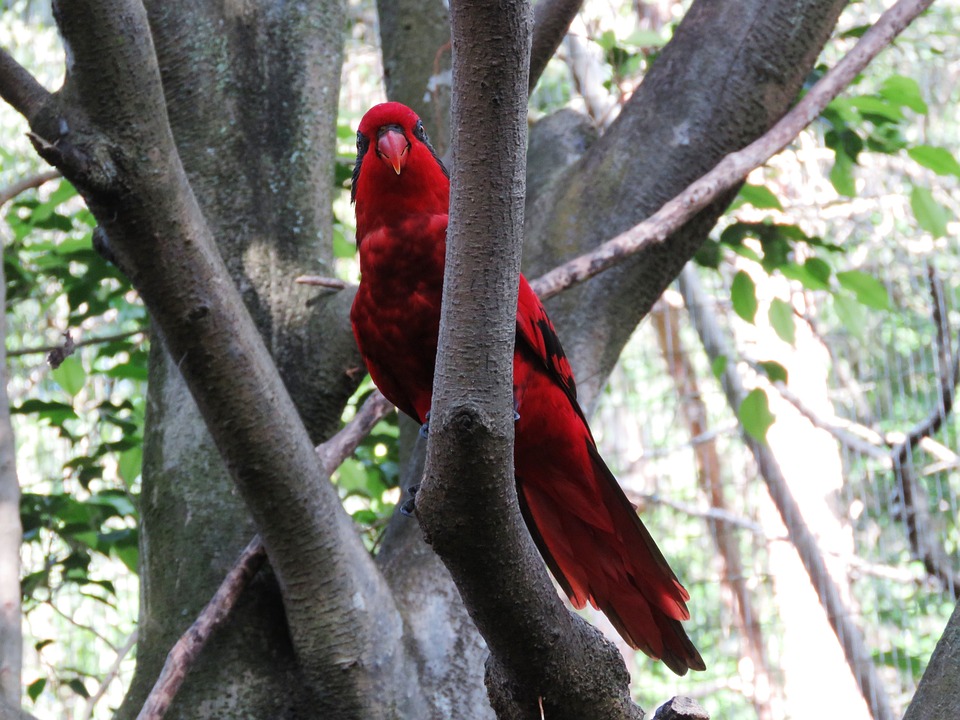Parrots, like humans, need a good night’s sleep to stay healthy and happy. As responsible parrot owners, it is our duty to provide them with a safe and comfortable sleeping area. In this article, we will explore the key elements to consider when setting up a sleeping space for your feathered friend.
Understanding Parrot Sleep Patterns
Before we delve into the specifics of creating a sleeping area, it is crucial to understand a parrot’s sleep patterns. Parrots are diurnal creatures, which means they are active during the day and sleep at night. However, they have a different sleep pattern than humans and may require uninterrupted sleep for longer periods. On average, parrots need around 10 to 12 hours of sleep every night to maintain their well-being.
Choosing the Right Location
When selecting a location for your parrot’s sleeping area, it’s vital to consider their natural habitat. Parrots are native to tropical regions, where they are accustomed to sleeping in quiet and dark areas. Therefore, it is best to choose a location away from noise and distractions, such as TVs or loud appliances. Additionally, ensure the sleeping area is shielded from direct sunlight, as excessive exposure may disrupt their sleep.
Selecting the Ideal Sleeping Enclosure
The sleeping enclosure you choose for your parrot should provide them with a sense of security and comfort. Here are a few options to consider:
1. Parrot Cages with Sleep Covers: Many parrot cages come with sleep covers, which are designed to create a dark and quiet environment. These covers can be easily placed over the cage at night, allowing your parrot to sleep undisturbed.
2. Sleeping Tents and Huts: Parrots often enjoy sleeping in cozy tents or huts. These can be placed inside their cages or attached to the sides. Ensure the tent or hut is made of safe materials, such as non-toxic fabrics, and is appropriately sized for your parrot.
3. Sleeping Perches: Some parrots prefer to sleep on perches outside their cages. These perches should be securely attached to prevent any accidents. Ensure they are made of non-toxic materials and are wide enough to allow your parrot to comfortably balance while sleeping.
Creating a Calm Sleeping Environment
To provide your parrot with a restful sleep, it’s essential to create a calming environment. Consider the following factors:
1. Lighting: Ensure the sleeping area is adequately darkened to mimic natural nighttime conditions. Avoid using bright or flashing lights nearby as they can disturb your parrot’s sleep.
2. Noise Reduction: Minimize any potential sources of noise around your parrot’s sleeping area. Close windows, use soundproofing materials, or consider white noise machines to create a peaceful atmosphere.
3. Temperature and Ventilation: Maintain an optimal temperature and good ventilation in the sleeping area. Parrots are sensitive to extreme temperatures, so ensure it is not too hot or cold. Avoid placing the sleeping area near drafts or air vents.
FAQs
1. How can I tell if my parrot is getting enough sleep?
Parrots need uninterrupted sleep, so observe if your parrot is sleeping for 10 to 12 hours at night without interruptions. Signs of adequate sleep include a well-rested appearance, alertness during the day, and a generally content demeanor.
2. Can my parrot sleep with me in my bed?
While some parrot owners may choose to allow their birds to sleep with them, it is generally not recommended. Beds can be potentially dangerous for parrots, and they may be exposed to harmful substances or get injured during the night. It is best to provide them with a separate sleeping area.
3. Should I cover my parrot’s cage with a blanket at night?
Yes, covering your parrot’s cage with a blanket or sleep cover helps create a dark and quiet environment, promoting better sleep. Ensure the blanket is securely fastened and allows proper ventilation to avoid any safety hazards.
Remember, a good night’s sleep is essential for your parrot’s overall well-being. By providing them with a safe and comfortable sleeping area, you are ensuring they have the best possible rest and are setting them up for a happy and healthy life.









